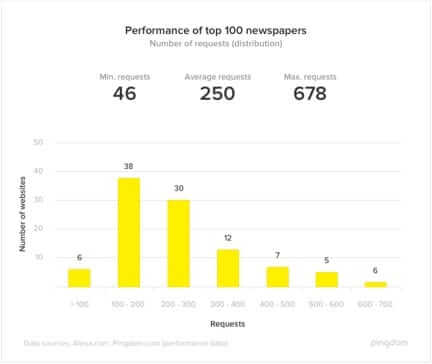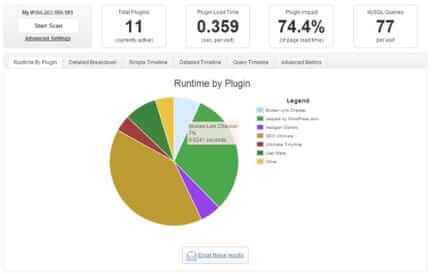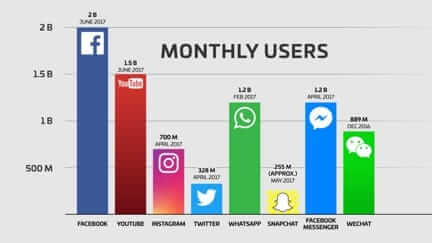4 Ways to Increase Web Page Speed
Recent Posts
How to Optimize NAP for Local SEO? Why You Should Automate Everyday Business Tasks Cheapest Web Hosting For Developers: Requirements And Considerations GPU Dedicated Server For High-Traffic Websites: Scaling And Performance How Blockchain is Revolutionizing Cross-Border Payments in Fintech Entertainment Beyond the Arena: Creative WWE Fan Experiences Boosting Restaurant Revenue: Integrating Online Ordering Systems A Guide to Visiting the Molokini Crater Tapping into the Potential: Why Forex Needs a Stronger Presence in Facebook Advertising B2B Marketing: The Ultimate Guide to Driving Business Growth in 2024 Creating a Personal Statement for Digital Marketing and Online Advertising Careers Achieving First-Page Rankings: Expert SEO Promotion TipsA website’s placement on search engines is critical in bringing in new traffic. While those who know the Web address are not likely to use a search engine, those customers and interested readers looking up a specific topic will turn to sites like Google for the best website recommendations. Due to this, the higher a website appears on search engine results, the more traffic it brings in, which in turn results in more sales, ad revenue and repeat visitors.
A number of variables are in play when it comes to boosting website placement on search engine results. One of growing importance is website page speed. A speedy website not only climbs a search engine’s ranking ladder but it also ensures visitors do not back out due to slow loading times. For any website looking to increase its search engine ranking and boost web page speed, here are several important points of emphasis to follow.
Get a New Server
Sometimes website load speed is out of an admin’s hands. They might tinker with the site, remove HTTP requests, delete images and go to an all white background to speed up the website. Despite all of this, the site might still take time to download. Sometimes, a lag time isn’t the fault of the website designer. It’s the fault of the server response time.
According to the DNS Speed Comparison Report performed by SolveDNS (2017), the average response time for a website stored on Verizon’s server (for example) takes 3.33 milliseconds to respond. A website stored on GoDaddy takes 19.66 milliseconds. This difference is negligible. However, when storing a website on EasyDNS’s server, it takes an average of 123.37 milliseconds. This is over 120 milliseconds longer to load than a website stored on Verizon’s server.
While this might be a difference of a tenth of a second, it quickly adds up. It’s important to not start behind the eight ball when it comes to loading speed, which is why it is important to select a fast server to house a website, especially when the site itself is data intensive.
We focus on direct response and customer acquisition in e-commerce, lead gen, and mobile. When it comes to results and leads, we speak your language.
Reduce HTTP Requests
The biggest drag on a website’s load time is the number of HTTP requests found on the page. According to Yahoo, 80 percent of a page’s load time is dedicated to downloading HTTP requests. This means, the fewer HTTP requests there are the faster a website will load.
The Royal Pingdom (2017) looked at news websites, in order to identify loading times and the amount of information necessary to download. The Financial Times was the top performing news website, requiring just 0.543 MB worth of data to be downloaded. The Guardian out of the UK also performed well, with just 1.37 MB worth of data. This is compared to the LA Times, which has 19.82 MB worth of information to download on the front page.
With over 18 MB of more information, it takes far longer to download the front page of the LA Times than The Guardian. When broken down into the amount of time to download a page, Financial Times loaded completely in 0.839 seconds. It took the LA Times 9.2 seconds to download (the worst loading news website Royal Pingdom tested was the Houston Chronicle, taking 15.46 seconds).
In the same research performed by The Royal Pingdom, it found the average newspaper website home page consisted of 250 HTTP requests. The minimum number of requests sat at 46, while the maximum hit 678 HTTP requests. In order to boost speed, a website must slash HTTP requests.

The best way to identify HTTP requests on a website is through Google Chrome. Chrome has a Developer’s Tool feature built within the browser. When in the browser an admin can select “Inspect,” followed by “Network.” This will show all of the HTTP requests, the name of the file and the size. This way, an admin can look over what’s dragging own the load time of a website.
Cut Unnecessary Plugin
A website will have plugins. Many of these run behind the scenes and provide a website designer with helpful information. Google Analytics is one such plugin that is beneficial. Some social media plugins can help as well. However, plugins impact a website’s load time and the connecting user’s computer needs to scan over the coding of these plugins. For website designers using WordPress, there’s a good chance a number of plugins are currently in use, as WordPress is built on plugins. This doesn’t mean it’s necessary to rid a site of all plugins. It just needs to delete those that are not providing a direct benefit to the website itself.
A plugin falls under an HTTP request, so some of the HTTP requests sent out by a site are associated with plugins inserted onto a website. The Plugin Performance Profiler helps with identifying these small applications running behind the scenes, as it is easy to forget about what all has been installed into the coding of the page. As the WordPress Plugin Performance Profiler indicates, on an individual test of a popular website, 74.4 percent of the website’s load time hinged on the plugins installed on the website (the site had a total of 11 active plugins and took a total of 0.359 seconds per visit to load). By removing those that are not necessary for the performance of a website, it is necessary to remove as much bloat as possible.

External Hosting is a Must
Media is an important part of any website. Shoppers and readers want to see visual aids through the help of ecommerce product videos. It’s easier to grasp a concept from a single picture or video than it is to read a longwinded blog post about the topic. However, pictures, and especially videos, take up a substantial amount of space. Beyond being another HTTP request it represents a large amount of information to download. This is why it is important to host this information on a different site.
According to Crazy Egg (2018), even the shortest ecommerce product videos will take up over 100 MB. This slows any site speed down to a crawl. Instead, it is possible to upload the video to a host site and then provide an embedded link on the website itself. While the link itself does represent another HTTP request, it slashes the amount of direct information a visiting computer needs to download. If the 100 MB video is placed instead on YouTube and then embedded onto the page, the visitor will not have to download the video. Instead, it streams onto their viewing device no different than if they were directly visiting YouTube.
YouTube isn’t the only hosting service a website admin needs to consider. Posting visuals onto Instagram, and instead of using website specific IM services a site can provide direct messaging via Facebook Messenger, Wechat or WhatsApp, the website will slash away hundreds of megabytes worth of previously required download material and, instead, take advantage of the third party hosting services.

Beyond the savings in download time, a website admin will also save money as it’s completely free to host content on these social media platforms (not to mention it increases their social exposure, which should help boost the company’s social media following at the same time.
Website speed is critical in a site’s overall success. As Crazy Egg (2018) points out, a single one-second delay can cost a website 11 percent fewer page views, a drop in conversions by seven percent and a dip in customer satisfaction by 16 percent. All of this points to the importance of having a zippy website that performs well, both for customers and for search engines. By taking these different tips to heart and using the benefits of breakthrough advertising, a website owner and admin will see a substantial boost in speed and with it an improvement in customer satisfaction across the board.
 Mike Giannulis
Mike Giannulis